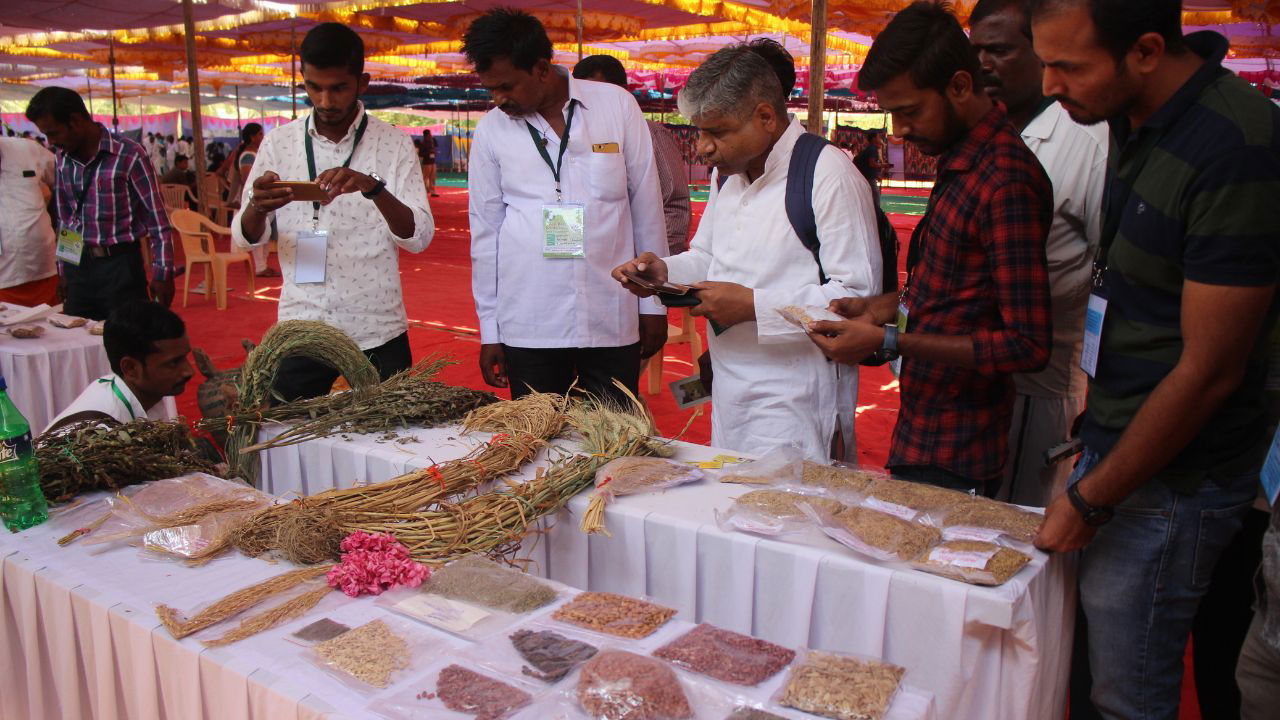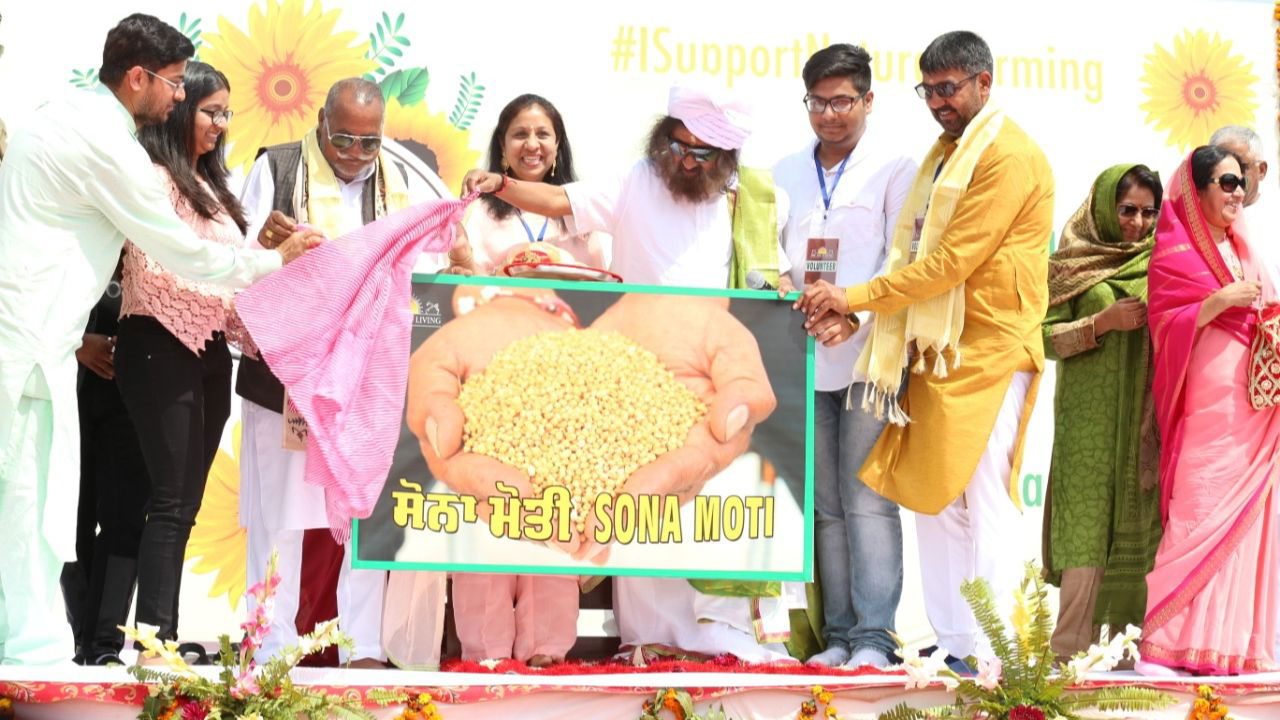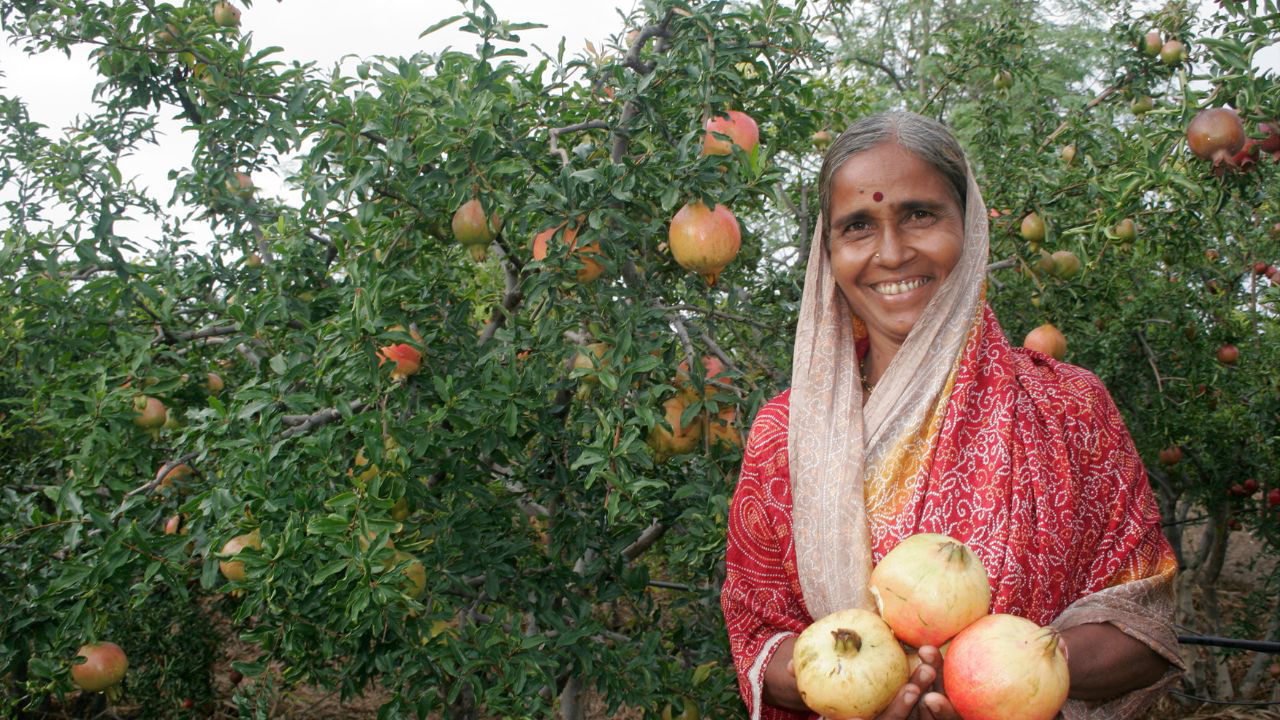
Ever heard of black turmeric, thorn okra, black custard apple or Rajamudi Batta rice, once reserved for royalty? Such and 10,000 other types of rare, dwindling seed varieties lost in time are now being revived at the Rashtriya Desi Beej Kosh at The Art of Living International Center. Gurudev Sri Sri Ravi Shankar says, that even if one species becomes extinct, it can have big repercussions for an interdependent world.
As farmers come to terms with the extremities of climate change, a revival of Indigenous seeds that are highly nutritious, climate-resilient, diverse, rich in taste and adapt well to the local soil without pinching the pocket of the farmer, is a step in the right direction for the future of agriculture. The seed bank also boasts 14 varieties of tulsi, one with a cinnamon flavour sourced from a monastery in Mexico where the monks had used it for 400 years, uniquely revived by The Art of Living.
"Since ages, we had been saving the local seeds. At some point in time, people in the greed for higher yield chose to poison the earth with chemicals and turned the land infertile" shares Gurudev Sri Sri Ravi Shankar, a global humanitarian and one of the foremost proponents of natural and sustainable farming and desi seed preservation. Gurudev shares about 27 types of herbs that have now been found growing in the Ashram premises that scientists had declared extinct.
The foundation has been instrumental in the revival of some highly nutritious heirloom varieties like the now-popular black rice, that were lost to the excesses of chemical farming. Loaded in protein, iron and fibre, and the highest source of antioxidants, the black rice variety was the staple of kings and warriors. The organization also revived emmer wheat, renamed Sona Moti by Gurudev due to its colour and incredible economic and health benefits. Ten thousand years ago emmer wheat, a hulled variety, was amongst the first cereals to be grown domestically. The extra protection from this hull is also the reason these wheats are typically grown in mountainous areas with poor soil conditions.

Not just this, but seeds that were on the verge of extinction like Bhoot Jolokia (Ghost Pepper) from Nagaland, one of the hottest chillies in the world, an endangered variety; Mysore Mallige Brinjal; Sangdi rice from Maharashtra; Kaipad rice, a saline-resistant rice variety from Kerala; Kochi red cucumber have also been revived by the organization.
Why do we Need to Preserve Desi Seeds?
The desi or indigenous seeds are well suited for local cultivation. These seeds can adapt to unfavourable growing conditions and are climate resilient. Their yield increases with progressive generations and are nutritionally rich. They boost soil fertility; and biodiversity; reduce pollution since these do not require chemical inputs; are sustainable; boost farmers’ income as they cater to a wider demand for exotic varieties; and make them Atmanirbhar.
“Farmers should use their birthright to produce seed from seeds, instead of being forced to depend on seed companies to buy from them every year. At the end of every season, the farmer should go to the farm, choose the best plants with the biggest and healthiest crops, ripen them and use the seeds for the next season. But this wasn’t happening. Now we are empowering the farmer to reclaim this right through the community-owned seed bank,” shares Dr Prabhakar Rao, Trustee with The Art of Living’s Sri Sri Agricultural Sciences and Technology Trust.

How is the Seed Bank Preserved?
One way some organizations preserve the seeds is by preserving the germ plasma with the DNA of the crop, by establishing cryogenic labs, putting the seeds in liquid nitrogen, cleaning, labelling and deep freezing them. This is done for research purposes or if for some unforeseen reason, the seed is no longer available in the world, it can be revived through the DNA.
“But Gurudev’s vision is completely different. We don’t necessarily believe in bottling the seeds alone. Our process is to keep it dynamic, where you keep using it and multiplying it. This we believe is the best way of keeping it alive. Otherwise, what have we done for the prosperity and benefit of the farmer?” shares Dr. Rao.
"Karnataka has such a diverse variety of seeds, this is our wealth and we must protect it. This will make our farmers more independent, keep them healthy and improve their financial situation," Gurudev shares. Naturally grown ash gourds weighing 30 kilos or pumpkins 10 times the size of regular are a common sight at the model farm today, giving a glimpse of what the future holds for farmers giving desi varieties a chance.
















